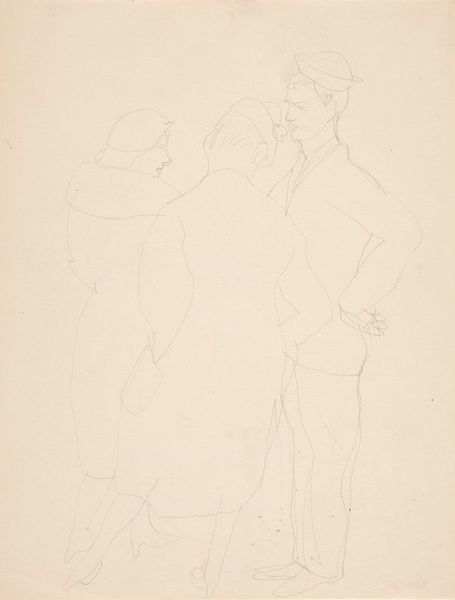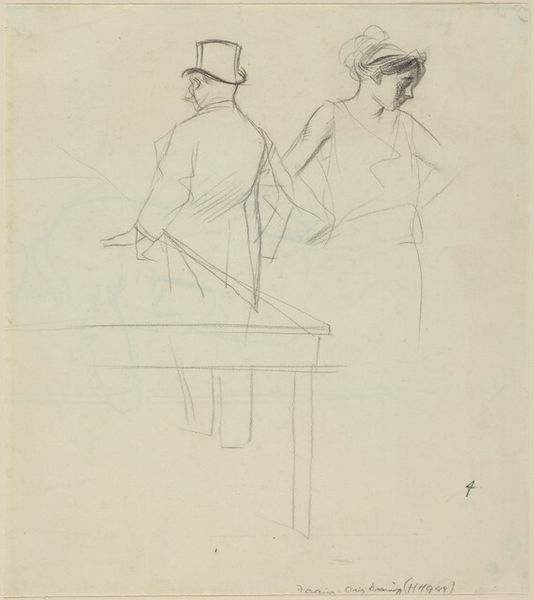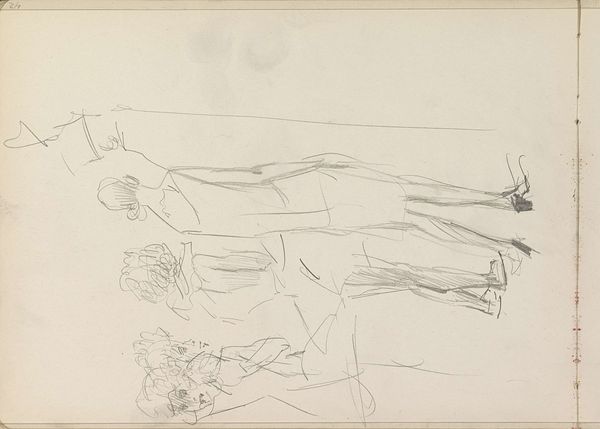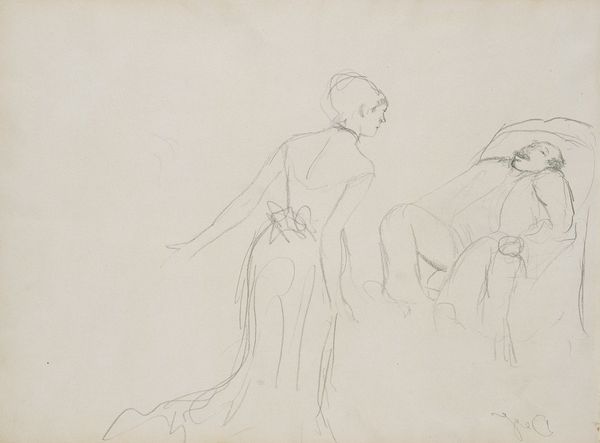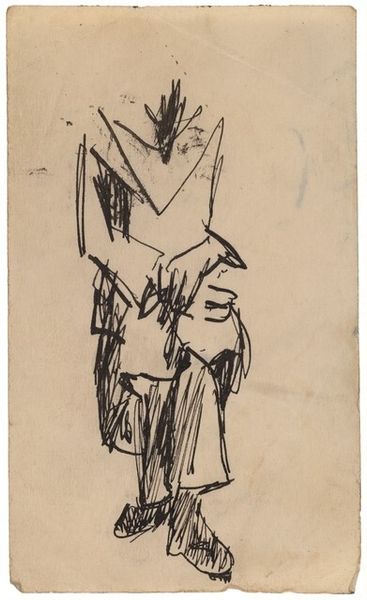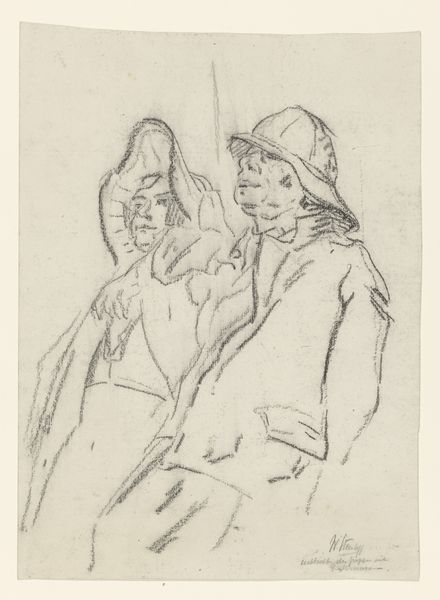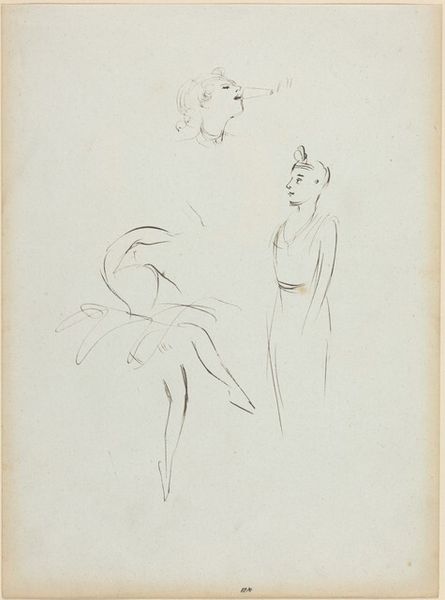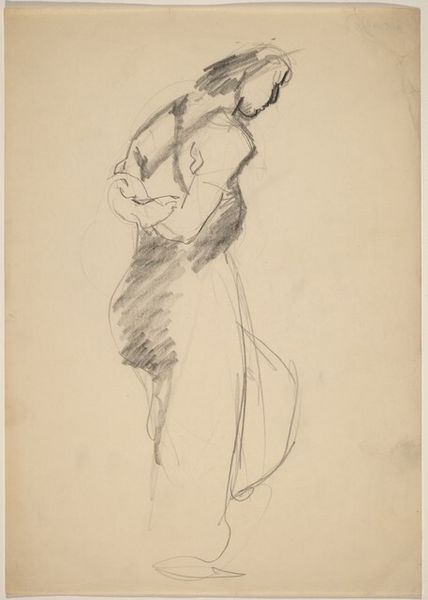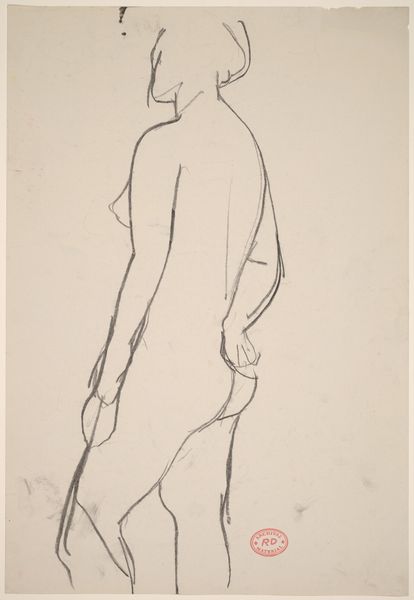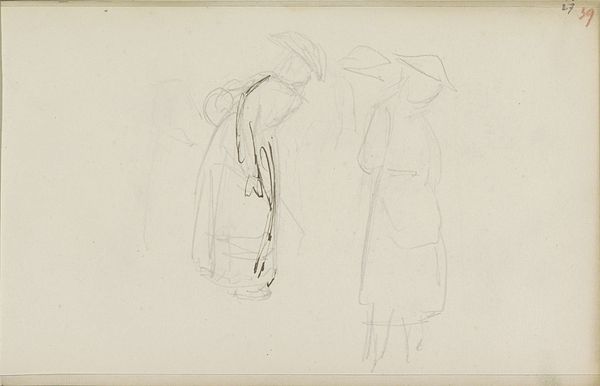
drawing, print, etching, pencil
#
portrait
#
drawing
# print
#
etching
#
pencil sketch
#
etching
#
figuration
#
pencil
Copyright: National Gallery of Art: CC0 1.0
Editor: So, this is "Clowns (Scene de clowns)" by Andre Dunoyer de Segonzac, from 1930. It looks like an etching, a really spare drawing. I’m struck by the vulnerability of these clown figures, there's a certain sadness in the simplicity. What's your interpretation of it? Curator: The spareness is key, isn't it? De Segonzac, working in a time of immense social upheaval, captures a tension between public performance and private emotion. The clown, historically, embodies a complicated space – existing as both entertainer and societal outsider. Think about the role of the clown; who are they for and at what cost? Editor: That's interesting. I hadn't really considered the social commentary. I was more focused on the artistic choices; the lines are so delicate. Is that deliberate? Curator: Absolutely. The delicate lines speak to a fragility, a sense of precariousness. Consider the position of these figures. They seem isolated despite being 'in costume'. To me, it’s impossible to look at an image like this, created in 1930, without thinking about the rise of totalitarianism and the enforced 'performances' of identity it demanded. Does that make you reconsider the seeming emptiness? Editor: It does, actually. It's like the drawing itself is holding back, hesitant to commit. So, the clowns could be representative of a broader societal pressure. I thought it was just a stylistic choice! Curator: Style *is* content. Nothing exists in a vacuum, does it? Even what appears to be a simple sketch carries the weight of its historical context, reflecting and refracting the anxieties of its time. Perhaps these clowns are wearing the masks that society forces them to wear. Editor: I’ll definitely look at etchings differently from now on, and think a bit more critically. Curator: That is the point of studying art! The real art is learning to see.
Comments
No comments
Be the first to comment and join the conversation on the ultimate creative platform.
